Spinach And Some Important Nutrition Of Spinach
History
Spinach is a member of the plant family called Amaranthasi, native to Central and Southwest Asia, and has been cultivated there for thousands of years. Modern spinach has believed to have first grown in parts of India and Iran. Arab travelers once brought spinach to the Mediterranean region around the half-century AD, where it is still cooked today, often appearing in Greek, Italian and French dishes and meals.
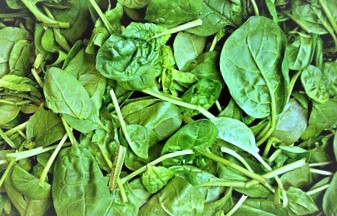 |
| Spinach |
Spinach
Spinach has considered being one of the healthiest foods in the world. Spinach leaves are rich in antioxidants, which help prevent cataracts and improve eyesight. Spinach has anti-inflammatory and antioxidant properties, and if you combine it with a very small amount of calories, it is one of the most nutritious foods.
Spinach is a vegetable that belongs to the Amaranthasi family, which includes other plant-rich plant foods, such as beetroot, Swiss chard, and quinoa. In this family, food has been shown to help protect the central nervous system, reduce inflammation, and delay aging by protecting cells from damage. Spinach phytonutrients include carotenoids such as beta-carotene, lutein, and xanthine, as well as antioxidants found in the nutritional profiles of carrots, blackberries, and broccoli.
Spinach is becoming popular and important every year. More and more people began to consider the benefits of power. And it's not a part of the food. Stuffed with man-made products, chemicals, sugar, and other ingredients in street food. Everyone about healthy eating is the unprecedented rise of cancer, obesity, allergies, and so on. Many argue that healthy eating is a luxury for people with tight wallets.
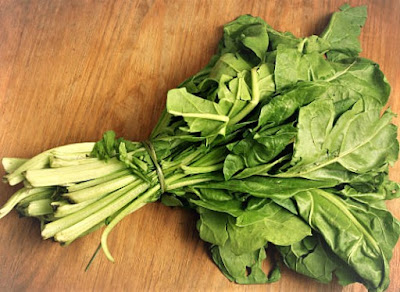 |
| Spinach Bunch |
Spinach is a popular salad. Green leafy spinach with large leaves is a very nutritious vegetable rich in nutrients. Spinach has a lot of nutrients. Spinach is an inexpensive vegetable and is available everywhere. Which people all over the world love to eat. Spinach is also eaten raw as a salad. Spinach has been mixed with mustard to make greens, which are eaten with great relish in Pakistan and India.
Fresh spinach is available all year round, although its main season is from early spring in March to May and then in the fall from September to October. Besides buying fresh spinach, it can also be found in most grocery stores in frozen and vegetable markets in a fresh form of the bunch. Spinach has a lot of assembled iron, potassium, calcium, and phosphorus.
Spinach is rich in protein, copper, and fiber. Many people call this plant brush gut, making it an integral part of the modern beauty menu. But there are not all the benefits of a vegetable. Even delicious spinach. This allows you to cook an incredible lot of different dishes. The diet prepared from its leaves is soups, salads, dishes, and desserts. This organic acid is present, so the parent does not lose its beneficial properties even after drying, heat treatment, and freezing.
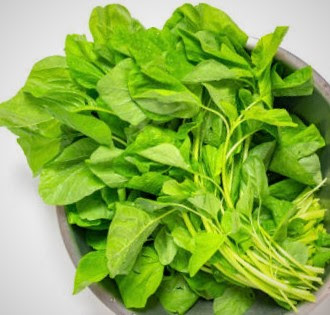 |
| Spinach |
There are three main types of spinach: CV, flat spinach, or semi-spinach. Green stores are a type that is usually found fresh in grocery stores. It has lighter leaves and a lighter flavor than other types. Flat spinach (also called smooth leaf spinach) is usually grown for use in canned or frozen spinach products. Semi-stimulant spinach is both ways but is less common than the other two types.
Spinach Nutrition
The nutritional value of spinach is very high. Spinach is rich in vitamins which are very beneficial for the brain and nervous system.
Spinach is a nutritious salad. It contains potassium, magnesium, vitamins B6, B9, and vitamin E. It is especially rich in vitamin C, vitamin K, folic acid, iron, and calcium.
Spinach is very useful for the skin. Because it contains a lot of Vitamin C, Vitamin K, and E which are very important for the skin and protect the skin from wrinkles.
Spinach is an excellent source of dietary fiber. It contains a lot of dietary fiber. Dietary fiber is digestive friendly. Relieves constipation.
Spinach contains vitamin C antioxidants like Vitamin E, Beta Carotene, Magnesium, Zinc, Zinc, Selenium. Besides protecting the blood vessels from swelling, they also play an important role in protecting against bone disease, osteoporosis, and high blood pressure.
 |
| Spinach leaves |
Spinach nutrition also provides flavonoids, a powerful antioxidant that fights and protects against disease. Free radical damage. These protective compounds inside the body make spinach the best-aged food available.
Spinach contains absorbent inhibitors, including high levels of oxalic acid. Oxalic acid molecules, also called oxalates, are a type of antinutrient that binds calcium and iron to the body and prevents the body from actually absorbing it. High levels of oxalate help to make iron and calcium less absorbent, prevent their use, and help expel them from the body through urine.
Spinach nutrition is considered a nutritious food, meaning that spinach has very few calories, but it is a good source of micronutrients such as Vitamin C, Vitamin A, Manganese, Zinc, and Selenium. This makes spinach useful in protecting various systems and functions inside the body, boasting a long list of benefits of spinach for better health ranging from better eyesight to better immune function.
In 30 grams of raw spinach contains 6.9 calories, 1.1 grams of carbohydrates, 0.9 grams of protein, 0.1 grams of fat, 0.7 grams of dietary fiber, 145 micrograms of vitamin K, 56% of vitamin A, 14% of vitamin C, 13% of manganese, 6% of magnesium, and 5% of iron Raw spinach also contains some calcium, riboflavin, vitamin B6, and vitamin E. For comparison, cooked spinach polish has a high nutrient profile. Spinach is high in fiber and protein when cooked, as well as high in vitamins and minerals such as vitamin K and vitamin A.
One cup of about 180 grams of cooked spinach (boiled) is 41.4 calories, 6.7 grams of carbohydrates, 5.3 grams of protein, 0.5 grams of fat, 4.3 grams of dietary fiber, 1,111% of vitamin K, 377% of vitamin A, 84% of manganese, 66% of folate, 39% of magnesium, 36% of iron, 29% of Vitamin C, 25% of riboflavin, 24% of calcium, 24% of potassium, 22% of vitamin B6, 19% of vitamin E, 16% of copper, 11% of thiamine, 10% of phosphorus. Cooked spinach also contains some zinc, niacin, sodium, and selenium.
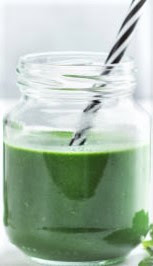
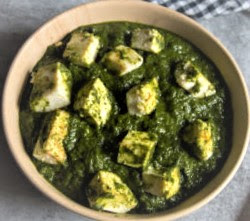

.png)


.png)

.png)


No comments:
Post a Comment
Please do not enter any spam link in the comment box.